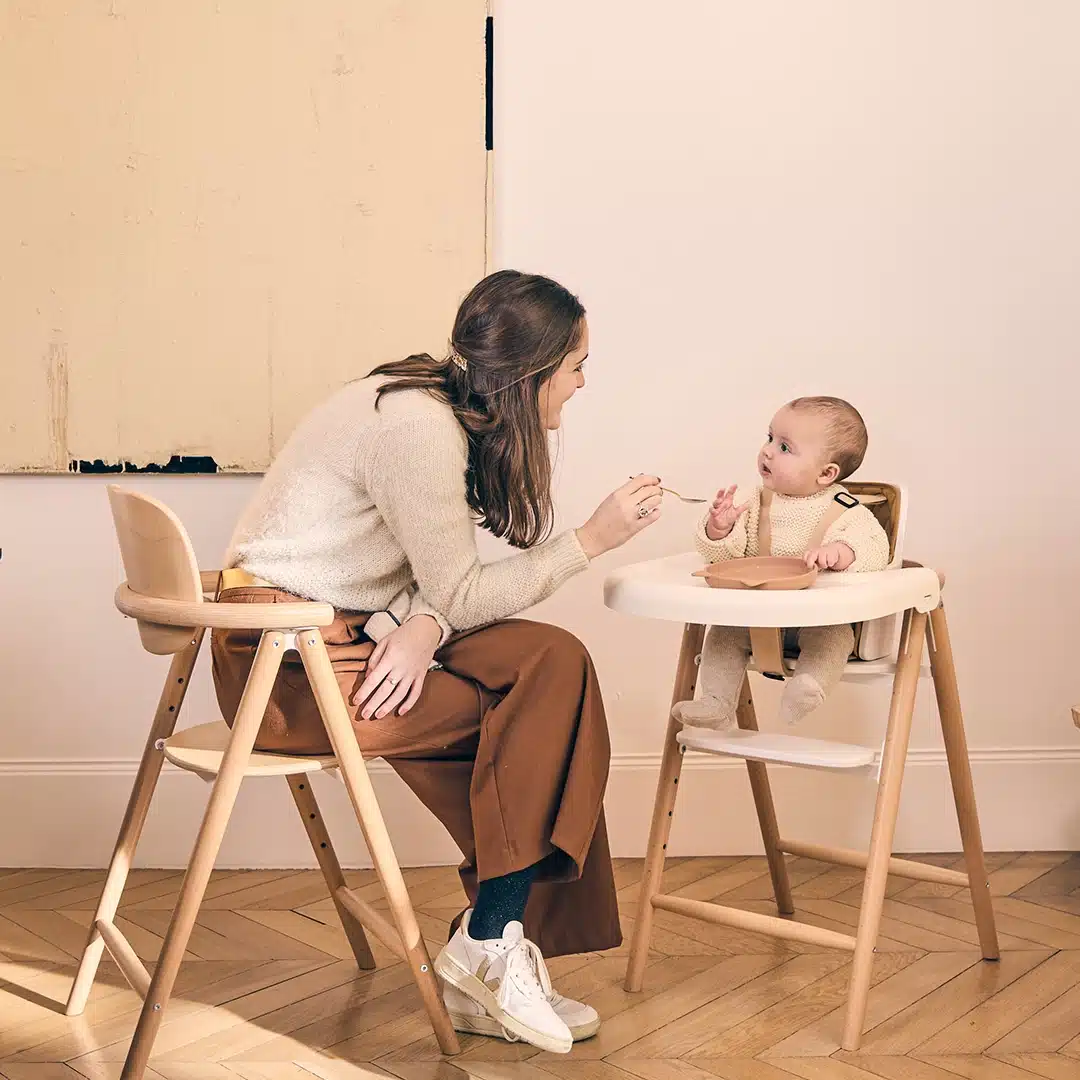discover our iconics
Menu
Close
- Our products
- The brand



First of all, a reminder! The stages of a baby’s diet are as follows:
The introduction of chunks into baby’s diet is the second stage up to full meals. There’s no exact science to tell you when your baby will be ready to eat chunks! Some health professionals say that babies can be introduced to chunks at around 6 months, others say at 8 months, while others say at 10 months.
Every child is different, and you’ll need to follow his or her pace. Yours may need to start introducing chunks at around 7 or 8 months. If in doubt, talk to your paediatrician or doctor.
Our advice: an introduction should be calm, playful and when the child is physically ready. Baby will chew and crush food with his jaws, palate and tongue. It’s also essential to observe your baby’s other signs of readiness, such as the ability to hold his head upright and sit with support. To be able to eat solid foods, your baby will need to be able to sit in a high chair like the TOBO.
Chunks are introduced gradually. At first, baby gobbles up tons of milk, then comes the puree and finally the chunks!
To get to the chunks, you’ll first need to make the purées increasingly granular, then mash the food with a fork, which will make bigger chunks, and then leave the food intact. This makes swallowing easier as you go along.
For chunks, start with soft, easy-to-chew foods:

Take it one step at a time. If your baby isn’t ready and doesn’t eat what you offer, that’s okay. Don’t force him to try. The aim is for him to understand for himself how things work, and to enjoy playing with textures, flavors and the feel of food.
When baby sulks about certain foods, this is normal, and you can try again other times. Eating shouldn’t become a frustrating or painful experience for him… or for you, young parents!

Remember to use a soft silicone spoon so that baby doesn’t hurt his teeth or gums.
A good bib is always necessary so that he doesn’t get his nice clothes dirty. However, let him explore food as he pleases. Once again, eating should be a pleasure. At their age, touch plays a key role. When introducing new foods and new stages in feeding, the aim is for baby to get to grips with the food he’s about to eat, so that he can enjoy it to the full.
A safe, comfortable highchair for your baby’s meals is a must! The TOBO highchair has been specially designed to ensure your child has a good time and stays with you for a long time. Its adjustable height allows it to be adapted to your child’s growth, ensuring long-term use.
Its ergonomic design ensures good postural support, promoting safe, comfortable feeding. Made from beech wood and featuring an elegant design, the TOBO is not only functional, but also aesthetically pleasing. Thanks to its color, material and style, it fits in anywhere.
As we said earlier, baby will make a mess of everything as he tries out new things. This exploration, like so many others, is likely to be invasive and messy. Plan times when the family is in good shape. Weekends at lunchtime are ideal for this dietary introduction. You still have the rest of the day to clean up, rest and enjoy your baby.
Child-led diversification, or CLD, is the process of offering a range of fruit and vegetable pieces that the child chooses to eat or not. It is often seen as complementary to traditional diversification. According to some health professionals, it is important that baby receives the necessary nutrients (protein, good fats, etc.) to avoid any form of deficiency. The most effective way to do this is with purees!
Does baby need teeth to eat chunks?
Not necessarily! Baby’s gums, palate and tongue are powerful little machines, ready to crush. Start with soft foods and cut them into baby-sized pieces. Before you know it, your little toothless gourmet will be a pro at chunking!
I’m afraid of false routes and choking. Any advice?
Follow a few simple rules. Adopt a good position so that baby doesn’t choke: head and back straight. Arm yourself with a good high chair. Start with soft foods cut into small pieces to minimize risk. Be careful not to cut food into rounds. Carrot slices and uncut grapes, for example, are to be avoided. Keep a watchful eye on baby during meals and encourage him to chew gently. And remember, it’s normal to make a bit of a mess in this culinary adventure.
What if baby doesn’t like what I give him?
Don’t worry if baby pouts at the first bite. Food diversification is like a culinary world tour for baby. Try again and again. Be creative with textures and flavors. And if all else fails, maybe baby is just in “I’m not ready for this” mode today. Don’t worry, try again later.
By gradually introducing chunks into your baby’s diet, and by using an adapted highchair, you’re contributing to his healthy eating development and independence. Offer your baby an enriching culinary experience, while ensuring his safety and comfort. And remember, eating is one of the greatest pleasures from 0 to 90 years of age.
The Charlie Crane team
You may also like :